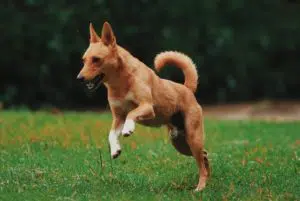
Some puppies are born deaf and other dogs can go deaf from a variety of causes, from chronic ear infections or injuries to drug toxicity and, just like us, old age. Often people think that a deaf dog will have behavioural problems or will be too hard to train whilst, sadly, a lot of puppies that are born deaf are euthanised.
However, a deaf dog is as trainable as a hearing dog and can have a wonderful life. It’s also worth remembering that the most dominant sense for a dog is smell and, whilst hearing is close second, dogs excel at reading our body language and visual cues.
So you absolutely can train a deaf dog as well as a hearing dog, the only difference is that you use hand signals instead of verbal commands. According to Judy Small who appears on this week’s episode with her dog chance, “when doing training sessions, dogs should be looking at you and focused on the task at hand, so it can often be easier to train a deaf dog as they tend to be more focused on their owner/handler in general instead of being distracted by sounds and noises around them.”
Top Tips for communicating with and training a deaf dog
According to Judy, there is no set signal for specific actions, whatever works for you and the dog. As long as it is the same consistent signal.
She also advises that deaf dogs should always be kept on a leash when outside of an enclosed area for their own safety. In general, she says deaf dogs will keep a closer eye on their owners so that they can be off leash in an off-leash park area if you have a sign and worked on training them with this for good recall.
Just don’t let them get too far away, so that you can capture their attention with a wave of your arms or stomping of your feet if they do get distracted.
About the Author: Lara Shannon is co-Host of Pooches at Play and has completed a Certificate III in Dog Behaviour & Training with the National Dog Trainers Federation. Lara also runs her own dog walking, dog minding and dog training business in Melbourne’s Bayside area.


Toilet Training a Puppy for success

Tips for training a reactive dog


Scenting walks for dogs – why they are so important


Get your paws on Lara Shannon’s best selling books ‘Eat, Play, Love (your dog) and World of Dogs.
Available in Australia, USA, UK and Canada.